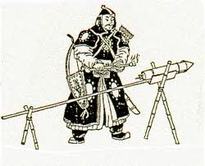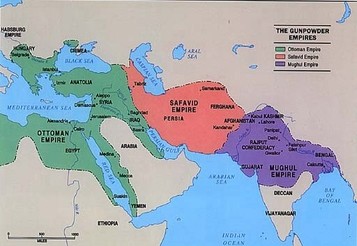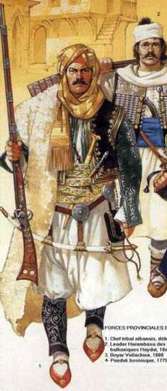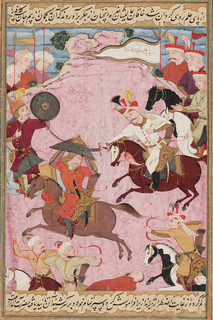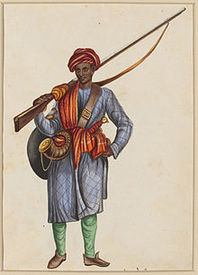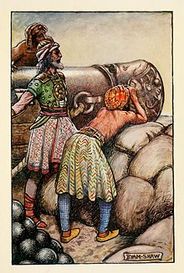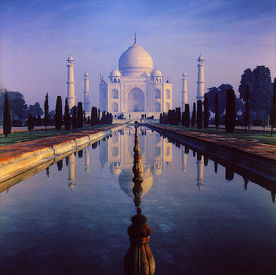Case Study: Gunpowder Technologies in the Gunpowder Empires
By: Karen Angeles
The Creation of Gunpowder
Gunpowder was first discovered accidentally
in Han China by alchemists trying to formulate an elixir that would grant
immortality. It is not known exactly when it was created, but an alchemist by
the name of Wei Boyang was the first person known to write about the chemical
composition of gunpowder. In his account, he tells about three powders (sulfur,
charcoal, and potassium nitrate) that when combined together, would "fly
and dance violently.”
In the beginning, gunpowder was used by the Tang Dynasty around 700 A.D. to create firework displays. However, Chinese inventors in 904 A.D. found that when small stone balls were put inside bamboo tubes along with gunpowder, when the gunpowder was lighted, the stone ball shot out powerfully. This invention was the first form of a modern-day rocket and was used as a model for the development of guns and cannons. By the end of the 13th century, the Chinese had invented small handguns to be used in warfare. Even though the Chinese tried to hide their discovery, Islamic traders and travelers soon found out about the gunpowder and brought the discovery with them to the Middle East. Islamic interaction with Europe in the form of religious wars and trade brought gunpowder to Europe. |
The Gunpowder Empires of Asia
Summary: The Impact of Gunpowder
|
The advancement in the development of gunpowder weapons allowed the three Gunpowder Empires to expand their empires and to control them. The Ottomans conquered most of the Islamic world. Even though they had a long period of decline, they were able to keep their empire until its fall in 1914. The longevity of their empire is a sign of how powerful the Ottomans were.
The Safavid Empire, although not as large and powerful as the Ottoman empire, had an influence in the region that can be seen today. Their establishment of Shiite Islam is still present today in Iran. Since most Middle Eastern countries practice Sunni Islam, it has created a divide within the Middle East. After the death of Akbar, the ruler of the Mughal Empire in India, costly military campaigns, religious conflicts, and unsuccessful rulers eventually led to the fall of the empire into the hands of the British. Their power however, can still be seen in their architecture in buildings like the Taj Mahal and Hamayun's Tomb. Those buildings represent the power and wealth of the Mughal empire, which came greatly form their successful military that possessed gunpowder weapons. |
Works Cited
"An Account of India and the Great Moghul." Internet History Sourcebooks Project. N.p., n.d. Web. 08 Feb. 2013.
"Early Modern Warfare." Wikipedia. Wikimedia Foundation, 02 June 2013. Web. 07 Feb. 2013.
"Gunpowder in Ancient China." Ancient China for Kids. Portland State University, n.d. Web. 06 Feb. 2013.
"The Rise of the Gunpowder Empires." Salem Press. N.p., n.d. Web. 8 Feb. 2013.
Mr. Marc Compton
"Early Modern Warfare." Wikipedia. Wikimedia Foundation, 02 June 2013. Web. 07 Feb. 2013.
"Gunpowder in Ancient China." Ancient China for Kids. Portland State University, n.d. Web. 06 Feb. 2013.
"The Rise of the Gunpowder Empires." Salem Press. N.p., n.d. Web. 8 Feb. 2013.
Mr. Marc Compton
